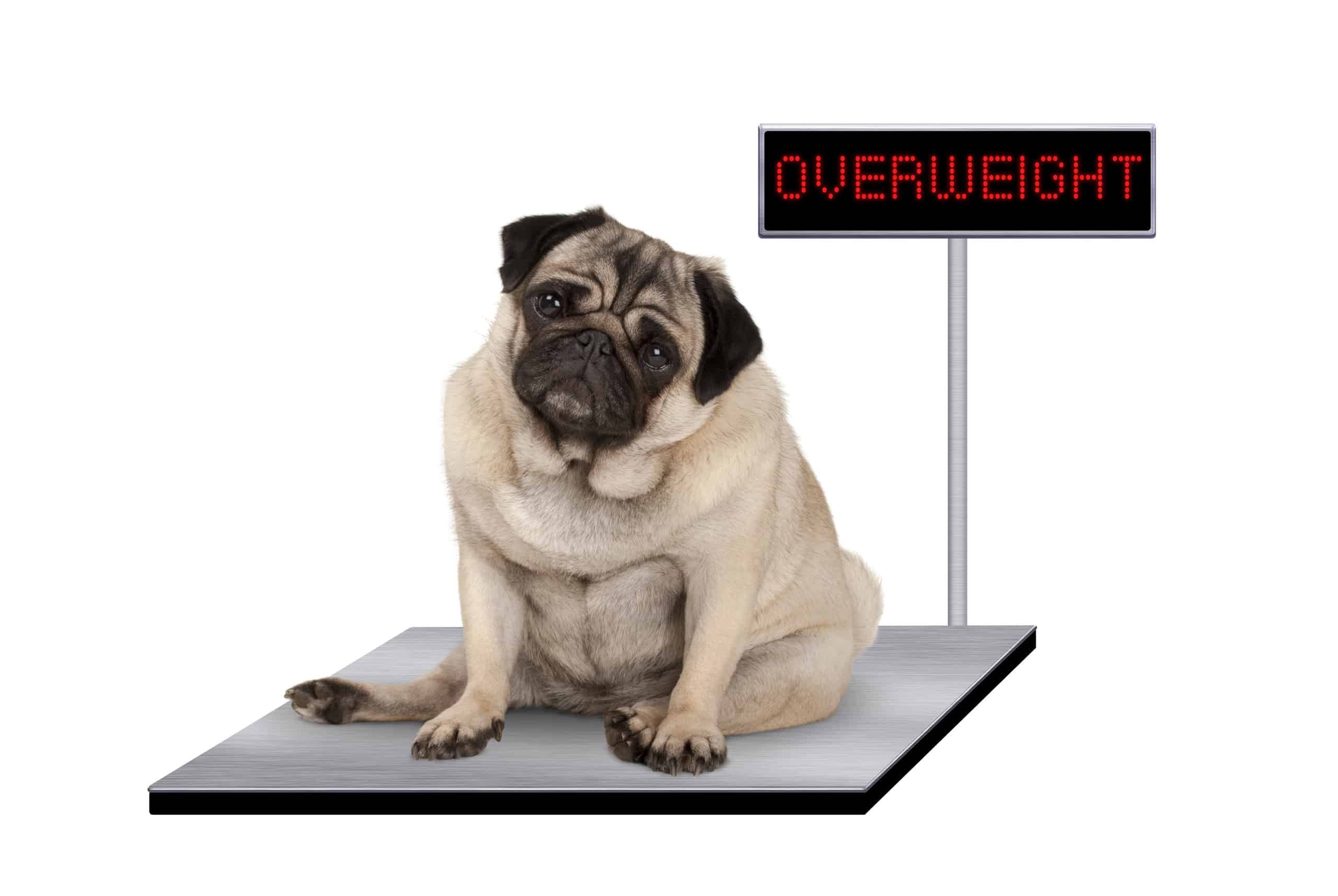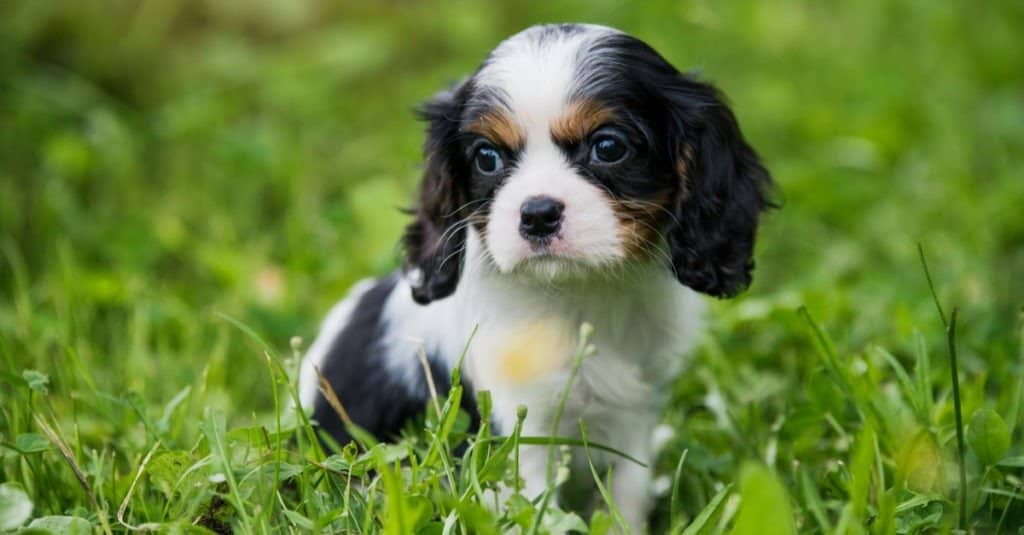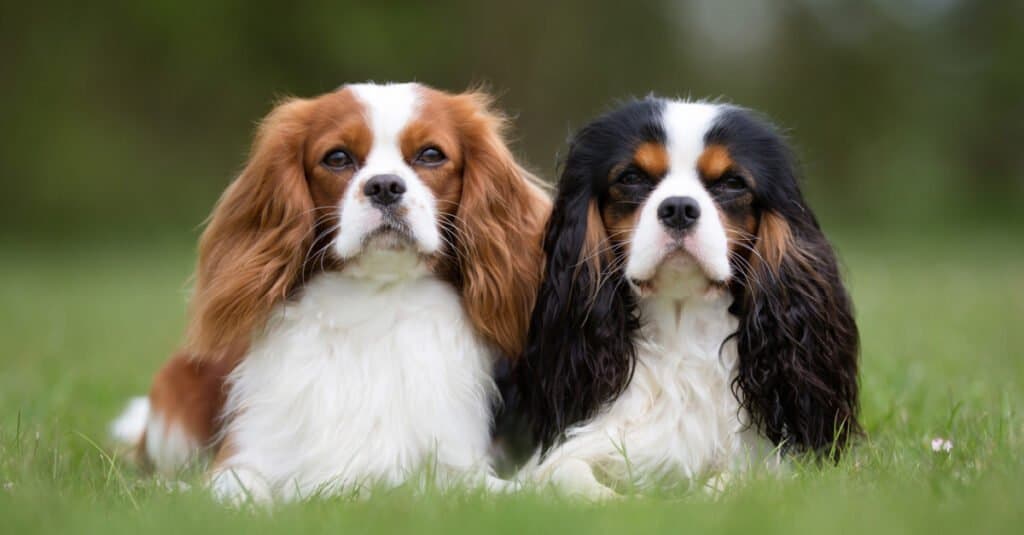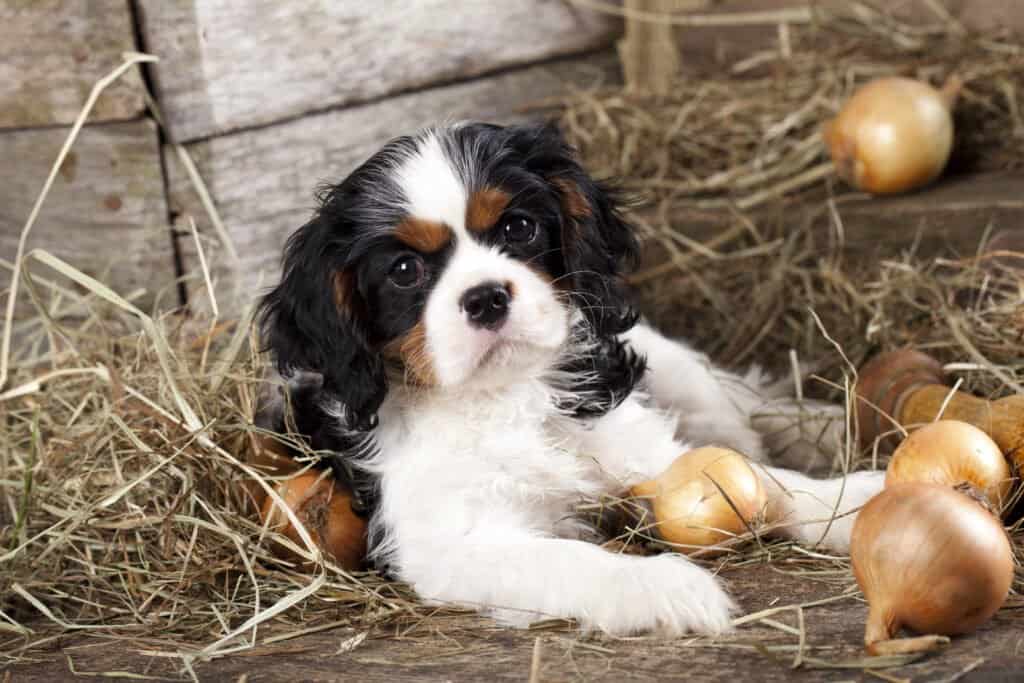
What dog breed is named after kings and queens and revered by aristocracy? If you guessed cavalier King Charles spaniels, you’re right. This breed was named after British monarchs, King Charles I and Charles II, in the 17th century. Developed through breeding with Asian toy dogs like pugs and Japanese chin, cavaliers are affectionate, easygoing, and lovable dogs.
What is the average cavalier King Charles spaniel lifespan? We’ve created a complete guide to help you answer this question and so many more. Follow along as we learn everything you need to know to give your cavalier a long and happy life.
Key Points
Discover the secret to unlocking a long and happy life for your cavalier King Charles spaniel. Below are the key points for the average lifespan of these adorable dogs. We’ve included factors that can impact the cavalier King Charles spaniel’s lifespan.
Here are the top 10 points to consider:
- Cavalier King Charles spaniels have an average lifespan of 12 to 15 years.
- They are prone to certain health issues, including heart problems and eye conditions.
- Regular veterinary checkups and preventive care are crucial for their well-being.
- Cavaliers require proper nutrition, exercise, and a balanced diet to maintain good health.
- Grooming, including regular brushing and bathing, helps keep their coat healthy and free from matting.
- Spaying or neutering is recommended to prevent certain diseases and unwanted pregnancies.
- Cavaliers may have specific dietary needs, so consulting with a vet is essential.
- Regular dental care, such as teeth brushing, can help prevent dental diseases.
- Monitoring their weight and providing appropriate exercise can help prevent obesity.
- Early detection and treatment of health issues can greatly impact their lifespan and quality of life.
How Long Do Cavalier King Charles Spaniels Live?

The average life expectancy of a cavalier King Charles spaniel is 12 to 15 years. Some sources estimate that they can live for nine to 14 years. The lifespan varies depending on overall health and quality of care. Compared to other breeds like Great Danes and St. Bernard, the lifespan of the cavalier King Charles spaniel is relatively long.
Preparing for Every Stage of Growth

The cavalier King Charles spaniel weighs 9 to 10 pounds as a puppy.
©iStock.com/FotoES
From their fragile beginnings in the newborn stage to the sometimes challenging adolescent phase, there’s a lot that owners need to prepare themselves for. Here’s a quick breakdown of cavalier growth through the stages:
- Newborn Puppy Stage (0 to 4 months): Needs mother to survive. Weighs a few ounces.
- Puppy Stage (4 months): Typical cavalier puppy weighs around 9-10 pounds.
- Adolescent Stage (6 to 9 months): May weigh about 11-14 pounds
- Young Adult Stage (1 to 2 years): Weight can range from 13-18 pounds.
As newborns, puppies depend on their mothers for everything. Newborns are usually only half an inch tall and only weigh a few ounces. They’re also completely blind and deaf.
From Juvenile to Full Grown Adult
Eventually, your puppy will enter the juvenile stage. The juvenile stage happens at three to six months. Puppyhood ends, and you’ll begin to experience a more playful but disobedient dog. This is when you can channel their high energy into proper training.
Your cavalier might be more physically developed at six to eight months, but they’re still a long way from reaching mental maturity. These dogs might have a regal background, but that doesn’t stop them from participating in regular puppy antics.
Weight Management Prolongs Lifespan

High-quality dog foods will help your puppy grow at the right rate.
©Eric Isselee/Shutterstock.com
Keeping your cavalier at an ideal weight can help them live longer. Every dog’s health and weight will vary slightly based on genetics, gender, and development. Always consult with a veterinarian when adjusting your dog’s dietary needs.
As juveniles, cavaliers usually weigh between 7 to 14 pounds and are 8 to 11 inches tall. By six to 12 months of age, cavaliers enter the adolescent stage. They’ll reach 90% of their final height at this time. Their weight will barely change after the first year.
The average weight for a fully grown cavalier is 13 to 18 pounds. As they mature, testosterone levels will increase. Males will begin exhibiting marking behavior, and females will begin experiencing heat. Owners should focus on proper socialization and interaction with others to give their cavalier the best adolescent stage.
By one to two years of age, your cavalier will reach maturity. Physical maturity will be fully reached at the end of their first year. Good social behavior can be established by 18 months. You’ll also notice their lovely coat thickens, and you’ll have to groom them more frequently. Regular grooming visits are recommended since the cavalier’s coat is quite complex.
Rapid Weight Gain
Cavalier King Charles puppies undergo rapid weight gain. They increase their body weight up to 20 times throughout their growth chart. Their diet must consist of high-quality dog foods that provide them with enough energy and nutrition. Talk to a vet to find the best food for your cavalier, the right amount of food to feed them, and the safest dog food containers.
Determining If Your Cavalier Is Overweight: Key Facts

Talk to your vet if you’re concerned your dog may be overweight.
©Monica Click/Shutterstock.com
One of the ways to tell if your cavalier is overweight is by physical touch. Run your fingers across their sides. Can you feel their ribs sticking out? Then it’s likely your dog is underweight. If you can feel the ribs without them sticking out, your dog might be at a healthy weight.
Do you have to push in to feel the ribs, or can’t feel them at all? It’s likely you need to talk to your vet about helping your dog lose some weight.
It’s common for owners to struggle with weight issues with their cavaliers. One of the best ways to help them maintain a healthy weight is by cutting back on treats and including regular exercise in their daily schedule. If these aren’t enough to manage your dog’s weight, then it might be time to bring in professionals for further guidance. A veterinarian can provide recommendations and suggest special food formulated for weight loss.
Factors That Affect Growth

Male cavalier King Charles spaniels have a little more muscle than females.
©Ssilverartist/Shutterstock.com
How big will your puppy get? There are a lot of different puzzle pieces that shape the cavalier King Charles spaniel’s lifespan and growth. Genetics, the impact of physical characteristics, gender, and diet all play a role in how big they get. By understanding these factors, you can provide your cavalier with the best environment to help them thrive.
Gender doesn’t play the biggest role when determining the King Charles spaniel’s growth, but it still impacts its size. Males tend to have a more muscular bodybuild, while females are leaner, with less muscle mass.
As for genetics, offspring from healthy parents will usually have similar growth patterns. At the same time, dogs from a family with congenital diseases will have a higher risk of inheriting them. As for nutritional habits, make sure your cavalier is getting enough vitamins and minerals to grow at the right rate.
As for activity levels, cavaliers need regular physical activity. Along with helping their mental abilities, physical activities also help your cavalier grow strong muscles and maintain a healthy weight.
Finally, owners should keep an eye on their cavalier’s size and weight. If you think that your puppy is beginning to gain too much weight, talk to a vet immediately. Regular monitoring and appropriate management of their weight is one of the most important factors for their well-being.
Colors and Coat Patterns of Cavalier King Charles Spaniels

The cavalier King Charles spaniel has four different coat colors.
©BIGANDT.COM/Shutterstock.com
Cavalier coats are a work of art. From the striking Blenheim markings to the elegant tricolor patterns and the captivating black and tan coats, these visual wonders make each cavalier a unique dog. Owners admire the beauty in every fur-covered brush stroke.
Here are the four distinct colors cavaliers come in:
- Blenheim: Chestnut markings on white with a white blaze between the ears. There’s also a lozenge shape marking in the center, known as the Blenheim spot.
- Tricolor: Black and tan markings. The tan markings are over the eyes, on the cheeks, inside the ears, and on the underside of the tail.
- Ruby: A rich red color all over.
- Black and Tan: Similar black and tan appearance as tricolor. There are also markings on their chest and legs.
Choosing a coat color is just the start. There are also other considerations you’ll want to take into account before getting your first puppy.
Considerations for Owning Cavalier King Charles Spaniels

Cavalier King Charles spaniels don’t do well in the heat.
©Liliya Kulianionak/Shutterstock.com
What are the most important factors when welcoming a cavalier King Charles spaniel into your home? You’ll want to consider their social nature, compatibility with children and other pets, and adaptability to various environments.
For starters, this breed requires frequent attention from their families. They can exhibit signs of separation anxiety if left home alone for extended periods.
As for living with other pets, the answer depends on your exact dog and the training you’re willing to invest in. Sometimes, cavaliers see cats and small animals as prey. However, proper training can help avert these behaviors.
In the beginning, house training can be difficult but not impossible. As long as you take your time and follow the correct positive reinforcement training techniques, you’ll be able to make great progress.
Do you live somewhere that’s especially hot? Then plan on playing inside with your puppy during the hottest parts of the day. This breed could be better suited for hot climates.
Common Health Issues
Cavaliers are prone to certain health problems. Along with regular problems like fleas, ticks, and ear mites, they also can inherit problems from their parents. Research conducted on 494 spaniels found that 13.2% of the cavalier King Charles spaniels examined had cardiac murmurs. These murmurs, or abnormal heart sounds, can indicate an underlying heart condition.
Thankfully, there are things you can do to stay on top of possible problems. To keep your cavalier safe, regular testing and preventative medication are essential. Spaying females or neutering males can also help prevent certain diseases and, of course, unwanted pregnancies.
Famously Old Cavalier King Charles Spaniel
Did you hear the heartwarming story of Timothy, the remarkable King Charles spaniel, who won everybody’s heart? Picture this — Timothy, an eleven-year-old cavalier, faced mobility issues because of an enlarged heart and regular seizures. His difficult story took a surprising turn when his owners began carrying Timothy around in a special bag.
Owners Rory and Ann Fox began carrying Timothy in a jute bag during church and holidays. The entire scene was so cute people would insist on taking pictures with the stylish pup. Soon, Timothy became a social media superstar.
The bag’s manufacturer, JuteExpo, created a custom bag version just for Timothy. Now, this cute cavalier has his very own bag featuring a welcoming message for photo taking. The Foxes have received free bags, and Timothy has become a celebrity within the family.
On Timothy’s birthday, the Foxes take him to places with dog-related names, such as Barkham Manor. The bag is super comfy and just the right size to fit this heartwarming pooch. This heartwarming tale is a reminder of how owners can direct the narrative of their dog’s life.
Are Cavaliers a One-Person Dog?

Cavalier King Charles spaniels have a somewhat laid-back temperament.
©Martin Mehes/Shutterstock.com
It’s time to uncover the truth about the cavaliers and their social tendencies. Contrary to popular belief, cavaliers aren’t limited to being a one-person dog. In the right situation, they can thrive in various social settings.
Cavaliers have a somewhat laid-back temperament. They do well living with other dogs or with just one person. They make ideal companions for children and the elderly. This breed is fairly playful and easy to train.
As for energy levels, cavaliers are considered moderately energetic. They’re not big barkers, so they don’t do well as watchdogs or protection dogs. Of course, all of these findings are generalizations about the breed.
When you get a cavalier King Charles puppy, you’ll quickly notice that they have a distinct personality. Some cavaliers seem to only do well when they have another dog to play with. Other cavaliers seem perfectly fine being by themselves. Pay close attention to how your puppy is acting to get an idea of their social needs.
Cavalier Cuddles: Best Petting Spots

Petting your dog releases the feel-good hormone oxytocin in their bloodstream.
©archimede/Shutterstock.com
Dogs evolved to enjoy human touch and petting due to their close bond with us. Interacting with us can release oxytocin, the blood hormone in dogs and humans. Similar to how gentle hair stroking feels good, dogs enjoy petting because it feels so good!
How can you have the perfect petting session with your furry companion? Find their favorite spots!
Pay attention to their favorite petting spots to have the perfect petting session with your cavalier. You can start by gently petting areas like their chest, upper and middle back, sides of the chest, and behind the ears. Other common favorite petting spots include the lower back, near the tail, belly, top of the head, under the chin, and on the front of the neck.
Watch your cavalier’s body language, and stop petting if you see any signs of fear or resistance. As your puppy becomes more comfortable, they’re more likely to offer up other areas to pets, such as their back, rump, or belly. Slow, gentle movements and light scratching can also be enjoyable for dogs.
As for hugging, move forward with caution. A lot of breeds don’t like being hugged. Some dogs tolerate hugs but don’t enjoy them. Watch your dog’s body language to get a good idea of what type of physical interaction they want.
Final Thoughts on Cavalier King Charles Spaniel Lifespan
The cavalier King Charles spaniel’s lifespan ranges from 12 to 15 years. To be your pooch’s best buddy, take them to the vet regularly for checkups and keep them updated on vaccinations. Feed them quality, nutritious meals, and make sure they get plenty of exercise to keep their tails wagging. Your furry friend can be by your side for a decade or longer, and it’s up to you to make every moment count.
Are you thinking about getting your very first dog? How exciting! As a new dog owner, there are a lot of things to consider that go beyond the breed’s lifespan. To help you make the right choice, this dog pet guide is a great place to start.
The photo featured at the top of this post is © Liudmila Bohush/Shutterstock.com
Ready to discover the top 10 cutest dog breeds in the entire world?
How about the fastest dogs, the largest dogs and those that are -- quite frankly -- just the kindest dogs on the planet? Each day, AZ Animals sends out lists just like this to our thousands of email subscribers. And the best part? It's FREE. Join today by entering your email below.
Thank you for reading! Have some feedback for us? Contact the AZ Animals editorial team.






